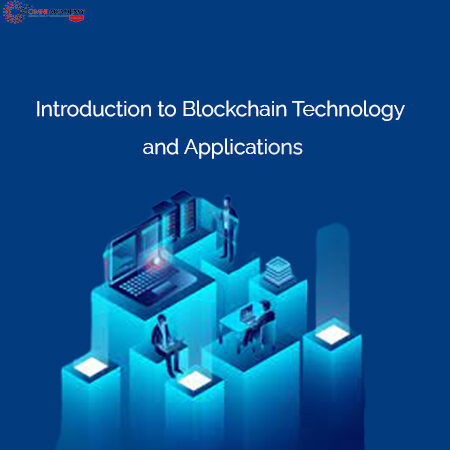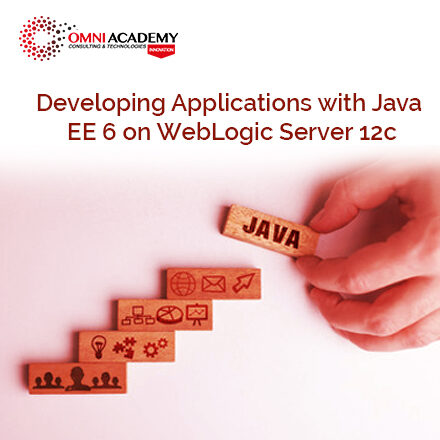Oracle Database 19c: Data Guard Administration
This course introduces the main architectural concepts of Oracle Data Guard. The delegate will learn how to use Oracle Data Guard to protect an Oracle Database against planned and unplanned downtime.
The delegate will also learn how to create and manage physical, logical and snapshot standby databases and how to use standby databases for reporting, querying, and testing purposes.
Course Key Learnings:
The delegate will learn and acquire skills as follows:
- Preparing a Primary Database for a Data Guard Configuration
- Creating a Physical Standby Database
- Creating a Logical Standby Database
- Creating a Snapshot Standby Database
- Monitoring a Standby Database Configuration
- Managing a Data Guard Configuration
- Troubleshooting Standby Database Configurations
- Tuning a Standby Database
- Backing up and Recovering a Data Guard Configuration
- Using Flashback in a Data Guard Configuration
- Using the Data Guard Broker
- Managing a Configuration using the Broker
- Overview of Patching and Upgrading
Course Content:
Module1: DATA GUARD OVERVIEW
- Overview of Data Guard
- Requirements for Maintaining a Standby Database
- Data Guard Terminology
- Types of Standby Databases
- Levels of Protection
- Physical, Logical and Snapshot Standby Databases
- Role Transition Management Services
- Data Guard Interfaces
- Standby Database Creation
- Data Guard Installation
- SYSDG Administrative Privilege for Data Guard Operations
Module2: DATA GUARD ARCHITECTURE
- Data Guard Architecture
- Processes Active on the Primary Database
- Processes Active on the Standby Database
- Data Guard Architecture and Initialization Parameters
- Data Guard usage with a Multitenant Database
- PDB Creation and Cloning in a Multitenant Architecture Environment
Module 3: CREATE A PHYSICAL STANDBY DATABASE WITH SQL COMMANDS
- Prepare the Primary Database for Data Guard
- Initialization Parameters for the Standby Database
- Datafile and Controlfile Duplication
- Create the Standby Instance
- Network Files Configuration
- Activate the Standby Database
- Verify Primary and Standby Databases are Working
- Archive Log Loss
- Open the Standby Database
- Shut Down and Start Up the Data Guard Environment
- Active Data Guard
- Far Sync Instance
- Monitor the Primary and Standby Databases
Module4: REDO TRANSPORT SERVICES
- Overview of Redo Transport Services
- How Data Guard Sends Redo Data
- Control when Redo Data is Sent with the VALID_FOR Option
- Handle Transmission Errors
- Manage Archive Gaps
- Automatic Outage Resolution with Data Guard in 19c
- Levels of Protection
- Fast-Sync Mode
Module 5: REDO APPLY SERVICES
- Overview of Log Apply Services
- Apply Redo Data Immediately
- Delay Redo Data Application
- Terminate Redo Apply Services
- Configure a Cascading Standby Database
- Create a Snapshot Standby Database
Module 6: ROLE TRANSITION USING SQL COMMANDS
- Role Transition Overview
- Prepare the Primary Database
- Prepare the Standby Database
- Perform a Switchover
- Perform a Failover
- Reinstate the Failed Primary
- Overview of Application Continuity in a Data Guard Environment
Module7: CHANGE MANAGEMENT
- Change Management Overview
- Add Datafiles or Tablespaces
- Drop Tablespaces and Delete Datafiles
- Transportable Tablespaces
- Rename Datafiles
- Add or Drop Redo Log Files
- DML Operations on Active Data Guard in 19c
- No logging Operations
- No logging Enhancements from 18c
- Lost Write Detection
- Shadow Lost Write Protection from 18c
Module8: CREATE A STANDBY DATABASE WITH A RECOVERY MANAGER
- Overview of Standby Database Creation with RMAN
- Create a Suitable Backup with RMAN
- Standby Path and File Names
- Build the Standby Instance
- Create a Standby Database with RMAN
- Create a Standby Database with RMAN from an Active Database
- Create a Standby Database with the dbca
Module 9: BACKUP AND RECOVERY CONSIDERATIONS IN AN ORACLE DATA GUARD CONFIGURATION
- Implement a Backup and Recovery Strategy
- The Usage of RMAN in a Data Guard Configuration
- Backup and Recovery of a Primary Database with a Physical Standby Database
- Backup and Recovery of a Logical Standby Database
- Use an RMAN Recovery Catalog in a Data Guard Configuration
- Create the Recovery Catalog
- Register a Database in the Catalog
- Configure Daily Incremental Backups
- Recover from the Loss of Datafiles and Control Files on Primary and Standby Databases
- Recover from the Loss of Online Redo Logs
- Restore and Recover Datafiles across the Network
- Roll forward a Physical Standby Database using RECOVER A STANDBY DATABASE FROM SERVICE primary_db
- One Command Refresh of the Standby Database
- Enable Block Change Tracking for a Physical Standby Database
Module 10: USE FLASHBACK DATABASE IN A DATA GUARD CONFIGURATION
- Overview of Flashback Database Usage in a Data Guard Configuration
- Configure Flashback Database
- Use Flashback Database Instead of Apply Data
- Use Flashback Database and Real Time Apply
- Flashback through Standby Database Role Transitions
- Automatic Flashback Standby in 19c
- Use Flashback Database after Failover
Module 11: DATA GUARD BROKER OVERVIEW
- Overview of Oracle Data Guard Broker
- Oracle Enterprise Manager
- The DGMGRL Command Line Interface
- Data Guard Monitor
- Install Oracle Data Guard
- Start up and use the Data Guard Broker
- Obtaining Data Guard Diagnostic Information
- The v$DATAGUARD_PROCESS View
Module12: BUILD A CONFIGURATION USING THE BROKER
- Prepare for a Configuration Build
- Configure the Primary Database
- Configure the Standby Database
- Validate a Database
- New Broker Commands in 18c
- Validate a Database spfile
- Validate Network Configuration
- Validate Status Connect Identifier
- Show,Enable and Disable the Configuration
- Execute DGMGRL Scripts
Module13: MANAGE A CONFIGURATION USING THE BROKER
- Data Guard Broker Configuration Files
- Display and Edit Database Properties
- Set the Configuration Protection Mode
- Use Additional Broker Configurable Properties from 18c and 19c
- Configure Fast-Start Failover
- Fast Start Failover in Observer Only Mode from 19c
- Execute a Switchover
- Execute a Failover
- Configure Multiple Failover Targets
- Alter the state of a Database
- Export the Broker File
- Monitor the Configuration
- Configure Multiple Observers
Module14: CREATE A STANDBY DATABASE WITH THE DBCA
- Overview of Creating a Physical Standby Database Creation with the DBCA
- Create a Standby Database with the DBCA
- Add Entries to the tnsnames.ora File
- Use the Data Guard Broker to Create the Configuration
- Create the Standby Redo Logs on the Primary Database
- Create the Standby Redo Logs on the Standby Database
- Verify the Data Guard Configuration
- Edit the listener.ora File on the Primary Database
- Edit the listener.ora File on the Standby Database
- Create a Data Guard Physical Standby Database for a Multitenant Container Database with the dbca in 19c
Module15: CREATING A LOGICAL STANDBY USING SQL COMMANDS
- Overview of Creating a Logical Standby Database using SQL Commands
- Prepare the Primary Database
- Prepare the Standby Database
- Transition a Physical Standby to a Logical Standby
- Start the Standby Instance
- Real-Time Apply
- Delete Archives
- Dictionary Views Containing useful Standby Information
- Monitor the SQL Apply Progress
Module16: MANAGING A LOGICAL STANDBY DATABASE
- Overview of SQL Apply Architecture
- Transaction Size Considerations
- DML and DDL Apply Considerations
- Intercept DDL Statements
- Skip DML and DDL on the Standby Database
- Modify a Logical Standby Database
- Materialized Views on the Primary Database
- Table Instantiation
- Restart SQL Apply
- Customize DBA_LOGSTDBY_EVENTS
- Rolling Upgrades using Logical Standby
- Rolling Upgrades on a Physical Standby
- Job Scheduling on a Logical Standby
Module17: TUNING A STANDBY DATABASE
- Overview of Tuning a Physical Standby Database
- Temporary Undo,Global and Session Variables
- The Significance of Tables without Primary Keys
- Statistics on the Logical Standby
- Transaction Consistency
- Adjusting the Number of Applier Processes
- Adjusting the Number of Preparer Processes
- Tune the Memory for the LCR Cache
- Set the ReopenSecs and NetTimeout Database Properties
- Compress Redo Transmission
- Optimize SQL Apply
- Optimize Redo Apply
Module 18: OVERVIEW OF PATCHING AND UPGRADING DATABASES IN A DATA GUARD CONFIGURATION
- Upgrade the Oracle Data Guard Broker Configuration
- Upgrade the Oracle Database in a Data Guard Configuration with a Physical Standby Database
- Upgrade the Oracle Database in a Data Guard Configuration with a Logical Standby Database
- Use DBMS_ROLLING to Upgrade a Database
- Leading Group Databases and Leading Group Master
- Trailing Group Databases and Trailing Group Master
- Use DBMS_ROLLING to Carry out a Rolling Database Upgrade
Module19: DATA GUARD QUICK SETUP GUIDE
- Data Guard Physical Standby Setup using the Data Guard Broker
- Primary Server Setup
- Configure Initialization Parameters
- Service Setup
- Standby Server Setup
- Create a Standby Database using DUPLICATE
- Enable the Broker
- Database Switchover
- Database Failover
- Read-Only Standby and Active Data Guard
- Snapshot standby
TARGET AUDIENCE:
The Oracle Database 19c Data Guard course is designed for database administrators and technical support staff who are required to plan and implement Oracle Data Guard configurations.
International Student Fees:$500
Job Interview Preparation (Soft Skills Questions & Answers)
- Tough Open-Ended Job Interview Questions
- What to Wear for Best Job Interview Attire
- Job Interview Question- What are You Passionate About?
- How to Prepare for a Job Promotion Interview
 Your FREE eLEARNING Courses (Click Here)
Your FREE eLEARNING Courses (Click Here)
Internships, Freelance and Full-Time Work opportunities
Flexible Class Options
- Week End Classes For Professionals SAT | SUN
- Corporate Group Trainings Available
- Online Classes – Live Virtual Class (L.V.C), Online Training
Free Exam Practice Test
- How to Pass Oracle DataBase 11g: Administration-I
- How to Pass Oracle Database 12c Essentials
- How to Pass Oracle 1z0-908 MySQL 8.0 Database Administration
- How to Pass Oracle Data Integrator 12c Essentials
Related Courses
Oracle Database Administration – OCP/OCA
ORACLE DATA GUARD ADMINISTRATION
Oracle Database 12C Data Guard Administration Course
Oracle Database 11g – Data Guard Administration
Oracle Database 19c Administration (DBA Complete Course)
Oracle Database Admin – I
Oracle Database Admin – II







